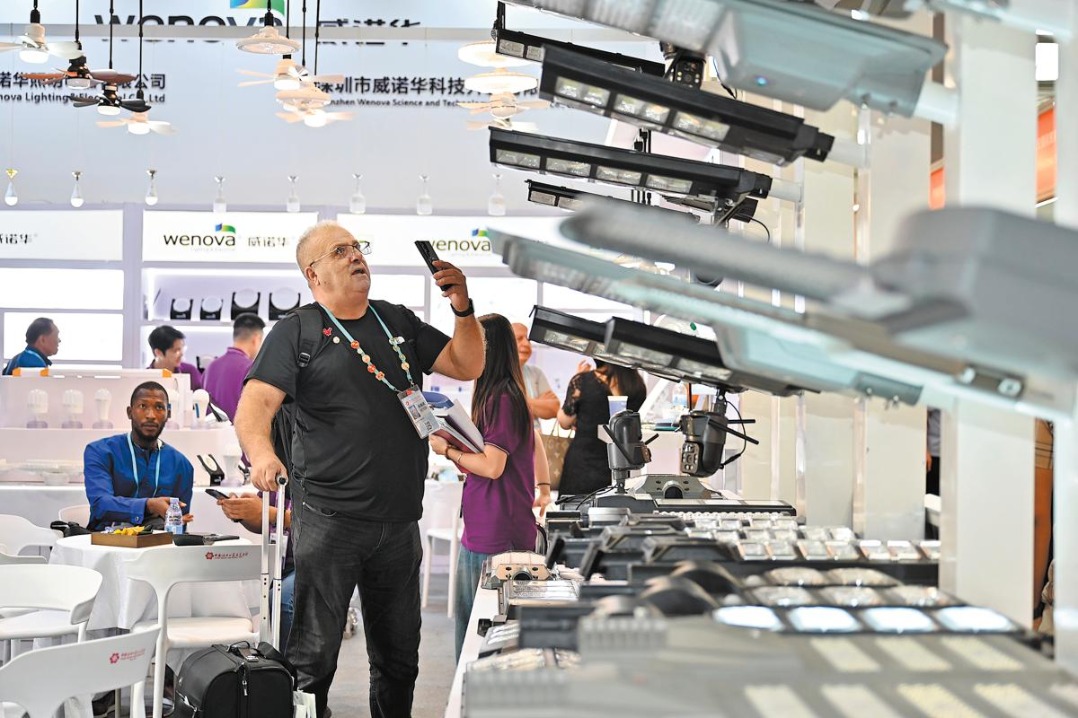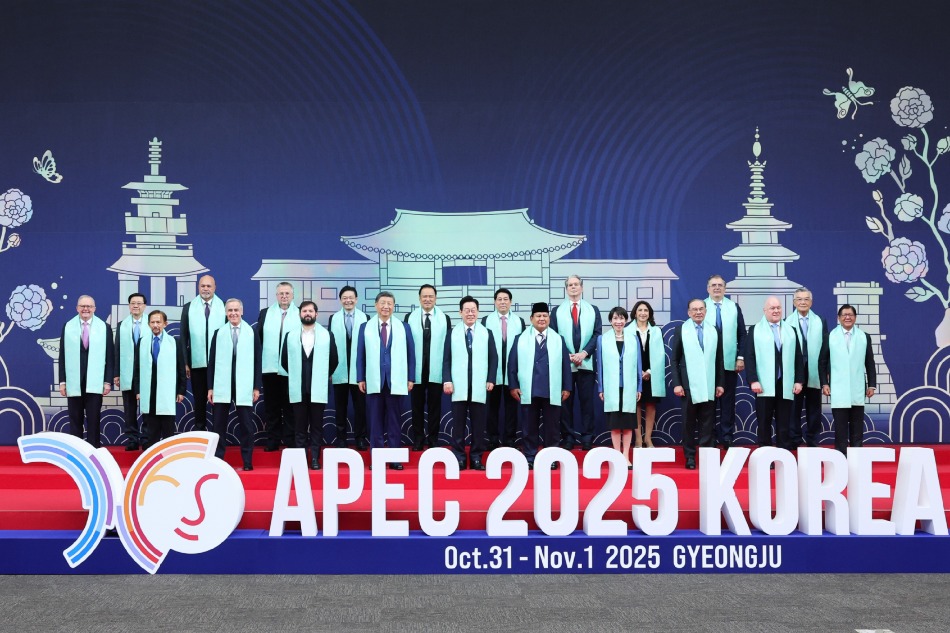New plan to boost inclusive green growth


Sustainable development and climate change are among humanity's biggest challenges, with cities playing a crucial role because they consume 75 percent of global energy and emit 70 percent of greenhouse gases. China's 15th Five-Year Plan (2026-30) is expected to set the stage for addressing this by accelerating smart sustainable low-carbon development (SSLCD) with the use of digital technology and green infrastructure.
The trend toward SSLCD is accelerating globally, with China leading the way. Despite international commitments, progress on national level sustainability has been slow, prompting a shift toward city-level leadership. Mayors, CEOs and community leaders, who are more in touch with their constituents, have become the primary drivers of change. The rationale underlying this approach was summarized in several videos produced at the Conference of the Parties to the United Nations Framework Convention on Climate Change, or COP29, in Baku in November 2024.
Urban areas worldwide face problems such as poverty, inequality, resource scarcity, financial constraints and conflicts. Climate change worsens the impact of all other issues. SSLCD addresses these challenges by integrating renewable energy, efficient resource use, compact urban planning, retrofitted buildings, optimized transport and improved waste management to create more resilient and livable settlements with a higher quality of life.
The 15th Five-Year Plan is expected to support this approach in China, specifically stressing high quality development, modernized infrastructure systems, green transition, Digital China Initiative, and Beautiful China Initiative, including eco-friendly work and lifestyles. Smart sustainable systems built on innovative AI and digital platforms would be the backbone of SSLCD.
Furthermore, the plan will pursue high quality Belt and Road Initiative cooperation worldwide to revive the global economy by strengthening supply chains and creating more livelihoods. Thus, China will continue to be the driver of world economic growth, a champion of open trade and the leader in digital technology. Trade will be boosted by AI supporting digital trade, including digitally-enabled transactions.
My presentation on the Sustainomics Framework at the Earth Summit of the United Nations in Rio de Janeiro in 1992 was aimed at addressing global unsustainability. The first core concept of sustainomics focuses on harmonizing the sustainable development triangle, by balancing and integrating three aspects — economic prosperity to lift the poor out of poverty, environmental protection and social empowerment and inclusion to share benefits equitably. The sustainable development triangle was the basis for the UN's 17 Sustainable Development Goals (SDGs), and its Balanced Inclusive Green Growth (BIGG) model. BIGG was developed to implement the SDGs by harmonizing economic growth, environmental protection and social inclusion.
China is a world leader in sustainable development. I have visited the country regularly during the past 50 years and witnessed the steady progress toward sustainability while trying to aid this transformation in a small way. China's recent economic performance has been phenomenal — averaging growth rates over 10 percent for several decades. Its social development has been equally outstanding — lifting about 800 million people out of poverty since the late 1970s and reducing inequality. Environmental issues, especially climate change, are also being addressed successfully. The 15th Five-Year Plan will consolidate this steady progress toward the 21st century Earth Eco-civilization.
A noteworthy BIGG success is China's Yangtze River Delta. Home to 240 million people, it accounts for 4 percent of China's landmass but contributes 25 percent of its GDP. It includes both large urban agglomerations, including major cities such as Shanghai, Nanjing, Hangzhou and Suzhou, as well as rural areas. The delta has demonstrated the BIGG-SSLCD transformation over the past century in three distinct stages.
The first pre-1950 stage was characterized by subsistence farming with low environmental impact. During the second stage from 1950 to 2000, industrialization and rapid economic growth led to environmental degradation. The third stage post-2000 saw a big shift toward sustainability, with ecological restoration and policy-driven BIGG-based development.
Studies show a striking similarity between the BIGG model predictions and measured values of environmental, social and economic variables for the Yangtze River Delta. The transformation has been remarkable — from subsistence agriculture to become a world leader in electric vehicle, lithium battery and low-carbon technology.
Internationally, China has shown leadership, strongly supporting the UN SDGs and 2030 Agenda, universally endorsed in 2015. The Belt and Road Initiative, unveiled by President Xi Jinping in 2013, is a unique multi-trillion dollar mechanism linking over 150 countries and over 30 international organizations to promote sustainable development along the BIGG path — especially in the poorest countries. The 15th Five-Year Plan will support BRI, which is well aligned with BIGG and SSLCD. My country Sri Lanka is situated along the Maritime Silk Road that connects the east and the west. It will benefit from the development of two major ports at Colombo and Hambantota with Chinese assistance.
In 2019, I chaired an expert committee on "Sustainable Sri Lanka 2030 Vision and Strategic Path", which defined the country's BIGG path. SSLCD can be implemented fastest in rapidly changing urban areas, facilitated by cooperation among multiple stakeholders — especially businesses, civil society and the government. We start with urban investments, focusing on digital technology and green infrastructure, especially in energy, transport and water systems. Building on the BIGG model, SSLCD facilitates smart city concepts by integrating digital tools, AI and data-driven decisions to enhance resilience and sustainability.
The focus is on three key perspectives. First, innovation-driven economies, entrepreneurship and knowledge-sharing. Second, social inclusivity, equitable service access and social participation. And third, green infrastructure, reduced pollution and natural resource use for climate resilience.
As urban populations grow and challenges become more complex, SSLCD uses smart sustainable systems to improve municipal management, governance and long-term planning. The big data revolution generates overwhelming information. Data analytic methods and AI use this data to better plan, track performance and manage systems. Smart sustainable systems can facilitate BIGG in many infrastructure, service and resource sectors such as energy, transport, water, waste management, public services, healthcare, education, agriculture, fishing and mining.
The BRICS grouping and the Global South, which together account for over 85 percent of the world's population and 70 percent of its GDP, will play a key role in this. SSLCD and BIGG, if supported by the 15th Five-Year Plan, will facilitate the ongoing transition to a more sustainable, peaceful and harmonious, multilateral world order built on mutually cooperative power centers such as the Shanghai Cooperation Organization, APEC, ASEAN, SAARC, G77+China and G20. They rely on soft economic power and mutually beneficial trading relationships, facilitated by the growing use of multiple global currencies.
Most countries would welcome this shift away from the declining US-NATO led unipolar system that relies more on hard military power, punitive sanctions, and the hegemony of the US dollar. China seeks to build a peaceful bridge between BRICS and the West. It is shocking that global arms spending exceeds $2.7 trillion — more than 10 times the meager $212 billion that goes into development aid. We badly need a more sustainable and conflict-free planet, especially to avoid a nuclear "World War III". We all share one planet. Let us work together to save it.
The author is the recipient of the 2021 Blue Planet Prize, and former vice-chair of the UN Intergovernmental Panel on Climate Change that shared the 2007 Nobel Prize for Peace. He is also chairman of the presidential expert commission on the Sustainable Sri Lanka 2030 Vision and a distinguished guest professor at Peking University, China.
The views don't necessarily reflect those of China Daily.
If you have a specific expertise, or would like to share your thought about our stories, then send us your writings at opinion@chinadaily.com.cn, and comment@chinadaily.com.cn.
































